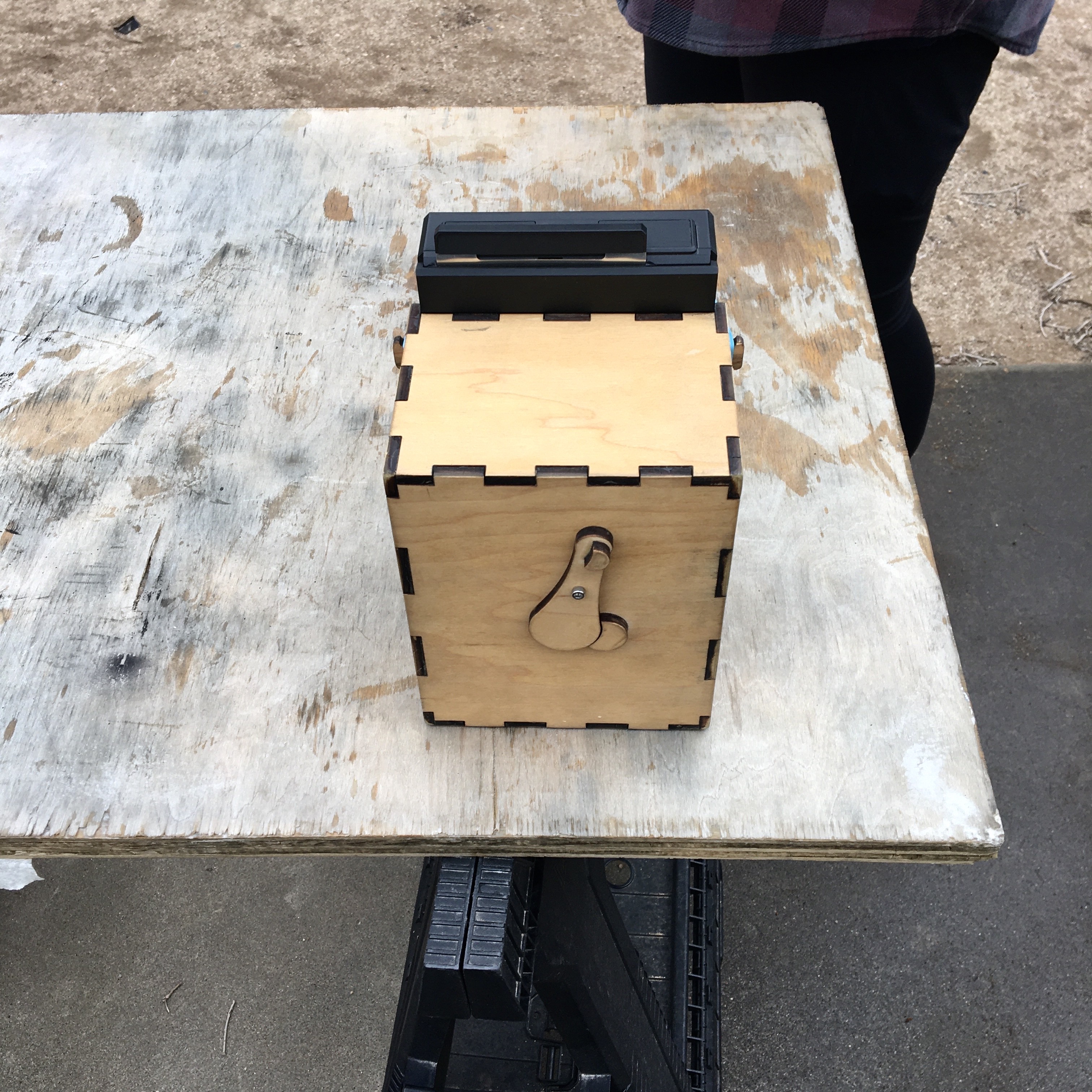
One of the camera's we used was Ethan's laser-cut 4x5 pinhole camera, made from a kit that he sells. Here's the Lomography Graflok back mounted to the camera:

Here's the camera and Lomo back mounted to a tripod:
Fuji's Instax Wide instant print film has up to now only been usable in plastic point-and-shoot cameras, which offer a limited amount of control over exposure and focus. But now with Lomography's 4x5 back for Instax wide, it can be exposed in any camera that offers a graflok film back, opening up a new world of opportunity for creative photographers.
Ethan has been using this film back with his 3D printed camera that adapts Mamiya press lenses. He also has made his own focusing adapter that has an integral viewing screen, making it more convenient to use than Lomography's supplied focus adapter, that requires the camera's native view screen be repeatedly installed and removed between each shot.
During our photo shoot today, I had the idea of using Ethan's backyard wooden fence as a makeshift gallery space. The fence's old iron nails worked well with rare-earth magnets as a means for attaching the Instax prints.
We noted with the longer exposures using the pinhole camera (3-5 seconds) that reciprocity failure caused the Instax color film to shift toward purple in these cloudy daylight shots.
The Instax film has an ISO speed rating of 800, much faster than the slow photo paper (ISO 6-12) that I typically use in pinhole cameras. As such, I was surprised when my light meter app recommended only a few seconds exposure in today's cloudy weather.
Typecast on Olympia Splendid 33 using Gregg-ruled shorthand paper.





Wow, I had no idea that instant film was capable of such a high ISO rating. Very interesting post. I especially liked the impromptu photo gallery enabled by the nails in the fence along with the rare earth magnets!
ReplyDeleteNow that's a fun day of photography! (:
ReplyDelete